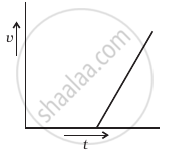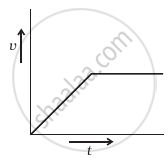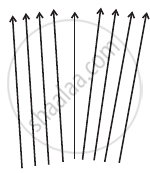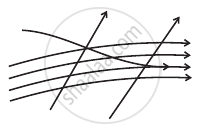Advertisements
Chapters
2: Units and Measurements
3: Motion In a Straight Line
4: Motion In a Plane
5: Laws of Motion
6: Work, Energy and Power
7: System of Particles and Rotational Motion
8: Gravitation
9: Mechanical Properties of Solids
▶ 10: Mechanical Properties of Fluids
11: Thermal Properties of Matter
12: Thermodynamics
13: Kinetic Theory
14: Oscillations
15: Waves
![NCERT Exemplar solutions for Physics [English] Class 11 chapter 10 - Mechanical Properties of Fluids NCERT Exemplar solutions for Physics [English] Class 11 chapter 10 - Mechanical Properties of Fluids - Shaalaa.com](/images/physics-english-class-11_6:5f2b1b2038084cf381bfa42c826a928c.jpg)
Advertisements
Solutions for Chapter 10: Mechanical Properties of Fluids
Below listed, you can find solutions for Chapter 10 of CBSE NCERT Exemplar for Physics [English] Class 11.
NCERT Exemplar solutions for Physics [English] Class 11 10 Mechanical Properties of Fluids Exercises [Pages 72 - 76]
MCQ I
A tall cylinder is filled with viscous oil. A round pebble is dropped from the top with zero initial velocity. From the plot shown in figure, indicate the one that represents the velocity (v) of the pebble as a function of time (t).
Which of the following diagrams (Figure) does not represent a streamline flow?
Along a streamline ______.
the velocity of a fluid particle remains constant.
the velocity of all fluid particles crossing a given position is constant.
the velocity of all fluid particles at a given instant is constant.
the speed of a fluid particle remains constant.
An ideal fluid flows through a pipe of circular cross-section made of two sections with diameters 2.5 cm and 3.75 cm. The ratio of the velocities in the two pipes is ______.
9:4
3:2
`sqrt(3) : sqrt(2)`
`sqrt(2) : sqrt(3)`
The angle of contact at the interface of water-glass is 0°, Ethylalcohol-glass is 0°, Mercury-glass is 140° and Methyliodide-glass is 30°. A glass capillary is put in a trough containing one of these four liquids. It is observed that the meniscus is convex. The liquid in the trough is ______.
water
ethylalcohol
mercury
methyliodi
MCQ II
For a surface molecule ______.
- the net force on it is zero.
- there is a net downward force.
- the potential energy is less than that of a molecule inside.
- the potential energy is more than that of a molecule inside.
Pressure is a scalar quantity because ______.
- it is the ratio of force to area and both force and area are vectors.
- it is the ratio of the magnitude of the force to area.
- it is the ratio of the component of the force normal to the area.
- it does not depend on the size of the area chosen.
A wooden block with a coin placed on its top, floats in water as shown in figure. The distance l and h are shown in the figure. After some time the coin falls into the water. Then ______.
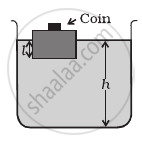
- l decreases.
- h decreases.
- l increases.
- h increase.
With increase in temperature, the viscosity of ______.
- gases decreases.
- liquids increases.
- gases increases.
- liquids decreases.
Streamline flow is more likely for liquids with ______.
- high density.
- high viscosity.
- low density.
- low viscosity.
VSA
Is viscosity a vector?
Is surface tension a vector?
Iceberg floats in water with part of it submerged. What is the fraction of the volume of iceberg submerged if the density of ice is ρi = 0.917 g cm–3?
A vessel filled with water is kept on a weighing pan and the scale adjusted to zero. A block of mass M and density ρ is suspended by a massless spring of spring constant k. This block is submerged inside into the water in the vessel. What is the reading of the scale?
A cubical block of density ρ is floating on the surface of water. Out of its height L, fraction x is submerged in water. The vessel is in an elevator accelerating upward with acceleration a . What is the fraction immersed?
SA
The sap in trees, which consists mainly of water in summer, rises in a system of capillaries of radius r = 2.5 × 10–5 m. The surface tension of sap is T = 7.28 × 10–2 Nm–1 and the angle of contact is 0°. Does surface tension alone account for the supply of water to the top of all trees?
The free surface of oil in a tanker, at rest, is horizontal. If the tanker starts accelerating the free surface will be titled by an angle θ. If the acceleration is a ms–2, what will be the slope of the free surface?
Two mercury droplets of radii 0.1 cm. and 0.2 cm. collapse into one single drop. What amount of energy is released? The surface tension of mercury T = 435.5 × 10–3 Nm–1.
If a drop of liquid breaks into smaller droplets, it results in lowering of temperature of the droplets. Let a drop of radius R, break into N small droplets each of radius r. Estimate the drop in temperature.
The sufrace tension and vapour pressure of water at 20°C is 7.28 × 10–2 Nm–1 and 2.33 × 103 Pa, respectively. What is the radius of the smallest spherical water droplet which can form without evaporating at 20°C?
LA
Pressure decreases as one ascends the atmosphere. If the density of air is ρ, what is the change in pressure dp over a differential height dh?
Considering the pressure p to be proportional to the density, find the pressure p at a height h if the pressure on the surface of the earth is p0.
If p0 = 1.03 × 105 Nm–2, ρ0 = 1.29 kg m–3 and g = 9.8 ms–2, at what height will the pressure drop to (1/10) the value at the surface of the earth?
This model of the atmosphere works for relatively small distances. Identify the underlying assumption that limits the model.
Surface tension is exhibited by liquids due to force of attraction between molecules of the liquid. The surface tension decreases with increase in temperature and vanishes at boiling point. Given that the latent heat of vaporisation for water Lv = 540 k cal kg–1, the mechanical equivalent of heat J = 4.2 J cal–1, density of water ρw = 103 kg l–1, Avagadro’s No NA = 6.0 × 1026 k mole–1 and the molecular weight of water MA = 18 kg for 1 k mole.
- Estimate the energy required for one molecule of water to evaporate.
- Show that the inter–molecular distance for water is `d = [M_A/N_A xx 1/ρ_w]^(1/3)` and find its value.
- 1 g of water in the vapor state at 1 atm occupies 1601 cm3. Estimate the intermolecular distance at boiling point, in the vapour state.
- During vaporisation a molecule overcomes a force F, assumed constant, to go from an inter-molecular distance d to d ′. Estimate the value of F.
- Calculate F/d, which is a measure of the surface tension.
A hot air balloon is a sphere of radius 8 m. The air inside is at a temperature of 60°C. How large a mass can the balloon lift when the outside temperature is 20°C? (Assume air is an ideal gas, R = 8.314 J mole–1K–1, 1 atm. = 1.013 × 105 Pa; the membrane tension is 5 Nm–1.)
Solutions for 10: Mechanical Properties of Fluids
![NCERT Exemplar solutions for Physics [English] Class 11 chapter 10 - Mechanical Properties of Fluids NCERT Exemplar solutions for Physics [English] Class 11 chapter 10 - Mechanical Properties of Fluids - Shaalaa.com](/images/physics-english-class-11_6:5f2b1b2038084cf381bfa42c826a928c.jpg)
NCERT Exemplar solutions for Physics [English] Class 11 chapter 10 - Mechanical Properties of Fluids
Shaalaa.com has the CBSE Mathematics Physics [English] Class 11 CBSE solutions in a manner that help students grasp basic concepts better and faster. The detailed, step-by-step solutions will help you understand the concepts better and clarify any confusion. NCERT Exemplar solutions for Mathematics Physics [English] Class 11 CBSE 10 (Mechanical Properties of Fluids) include all questions with answers and detailed explanations. This will clear students' doubts about questions and improve their application skills while preparing for board exams.
Further, we at Shaalaa.com provide such solutions so students can prepare for written exams. NCERT Exemplar textbook solutions can be a core help for self-study and provide excellent self-help guidance for students.
Concepts covered in Physics [English] Class 11 chapter 10 Mechanical Properties of Fluids are Introduction of Mechanical Properties of Fluids, Archimedes' Principle, Stoke's Law, Equation of Continuity, Torricelli's Law, Variation of Pressure with Depth, Atmospheric Pressure and Gauge Pressure, Hydraulic Machines, Streamline and Turbulent Flow, Applications of Bernoulli’s Equation, Reynold's Number, Effect of Gravity on Fluid Pressure, Terminal Velocity, Critical Velocity, Excess of Pressure Across a Curved Surface, Thrust and Pressure, Pascal’s Law, Surface Tension, Viscous Force or Viscosity.
Using NCERT Exemplar Physics [English] Class 11 solutions Mechanical Properties of Fluids exercise by students is an easy way to prepare for the exams, as they involve solutions arranged chapter-wise and also page-wise. The questions involved in NCERT Exemplar Solutions are essential questions that can be asked in the final exam. Maximum CBSE Physics [English] Class 11 students prefer NCERT Exemplar Textbook Solutions to score more in exams.
Get the free view of Chapter 10, Mechanical Properties of Fluids Physics [English] Class 11 additional questions for Mathematics Physics [English] Class 11 CBSE, and you can use Shaalaa.com to keep it handy for your exam preparation.

